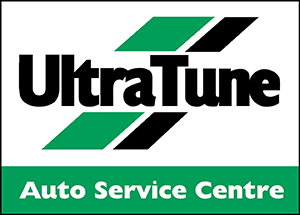The Motor Vehicle Standards Act 1989 is being updated for the first time since 2000 and now is the perfect time for fleet and private owners to be aware of the impending changes.
A lot has changed since then, and these updates are designed to bring the Act up to date with the modern world, get rid of unnecessary legislation and properly address the fact that cars today are very different compared to 20 years ago.
“This legislation will replace the existing Motor Vehicle Standards Act which has been in place for nearly thirty years and was written at a time when much of today’s vehicle technology was not available,” said Paul Fletcher, the Federal Minister for the Department of Infrastructure.
“The new legislation, to come into effect from 2019, will provide a modern, strong regulatory platform for vehicle standards that will better protect the community, provide more choice for specialist and enthusiast vehicles and be responsive to emerging technologies.”
The below guide will take you through the changes to importing a car into Australia.
What exactly do these changes mean?
In February 2016, following a review into the existing Motor Vehicle Standards Act, the Australian government announced what it had planned. Following extensive industry consultation that resulted in a few adjustments to those original plans, the Road Vehicle Standards Bill was to be introduced into parliament before the end of 2017.
As a result, the following changes are expected to take effect by 2019:
- You’ll have more access to different specialist, classic, luxury and enthusiast cars.
- The process of importing a car through the Registered Automotive Workshop Scheme will be quicker and easier, while the quality of these vehicles is improved.
- A simplified process for importing special vehicles that fail to meet typical standards.
- Improved supply of new mainstream cars.
- Clarified supplier responsibilities in the event of a vehicle recall.
- Vehicle recall provisions will apply to all road vehicles sold in Australia, whether private or commercial.
- New vehicles will require a secure vehicle identification marking to deter theft and re-birthing.
- Reduced regulatory burdens for registered automotive workshops (RAWs).
Importing rare and special cars
You’ll be able to import a wider variety of rare, luxury, classic, collective and special-purpose vehicles more easily with expansions to the concessional arrangement scheme, which grants exemptions to usual requirements when importing certain special vehicles. This is one of the main ways to import vintage or special cars that don’t meet typical new car standards, and the car import reforms are making it easier.
Prior to these reforms, a vehicle could only qualify if it was manufactured before 1989. Naturally, setting a fixed date like this doesn’t make a lot of sense because the number of eligible cars keeps shrinking each year. The reforms will replace the “manufactured before 1989” requirement with a “must be at least 25 years old” requirement.
Regulation and costs for businesses
Overall, these updates will shift Australian vehicle standards closer to that of international equivalents to make overseas import of cars to Australia easier, and reduce the costs involved in regulating and managing these imports.
Current regulation includes a $12,000 special duty on imported used vehicles. This is rarely applied but still represents a significant hurdle for importing used cars. The cost of administering this duty is higher than the return, with a lot of the costs borne by automotive businesses.
The removal of this outdated rule is one of the changes businesses should expect to encounter. Appropriately registered automotive workshops and dealerships can expect reduced red tape, additional options and more streamlined approval and registration processes.
Registered Automotive Workshops (RAW) will now be able to import both new and used vehicles of the types listed by the Specialist & Enthusiast Vehicle (SEV) register. As a garage business owner this means you can offer your customers added value with less bureaucracy, and as a customer you can enjoy increased options with better value in more places.
To get on the SEV register, a vehicle must match at least one of the following criteria:
- Performance. High performance with specifications such as power-to-weight ratio, that are significantly superior to mainstream Australian vehicles.
- Environmental. Environmentally high-performing, such as vehicles that offer much lower emissions per kilometre travelled than mainstream cars.
- Mobility. Manufactured with special features to assist people with disabilities.
- Rarity. One of only a small number, limited editions.
- Left-hand drive. A left-hand drive car of which right-hand drive versions are not available anywhere in the world.
- Motorhomes and campervans. A vehicle originally manufactured as a campervan or motorhome.
This information has been repurposed from an original publication from www.finder.com.au











